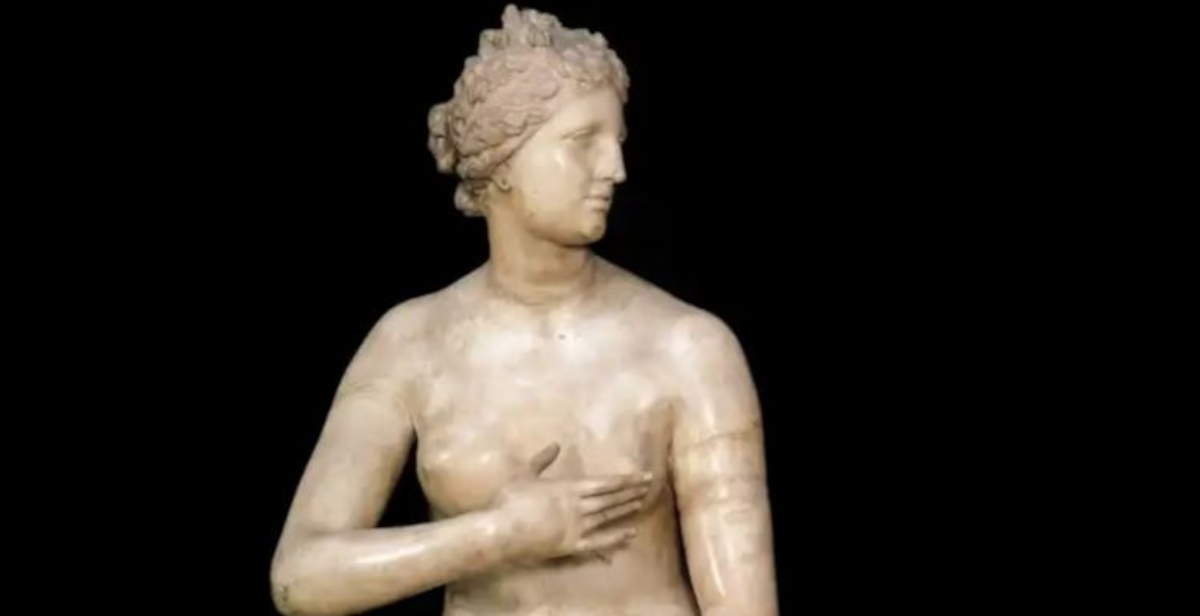The bronze copy of the Medici Venus no longer greets visitors in the foyer of theFederal Office for Central Services and Property Matters in Berlin-Weissensee. After years of silent presence in the institutional space, six months ago the statue disappeared, without official explanation. Its absence raised questions, prompting some employees and citizens to even write to newspapers in an attempt to clarify the reason for the removal.
The response came only recently and has attracted some media and cultural attention: the statue was allegedly perceived as “sexist.” It was the federal office’s Equal Opportunity Officer who pointed out the alleged criticism, suggesting that the depiction of the nude female figure, although classical and linked to a historically established artistic canon, might be problematic in relation to compliance with the provisions set forth in the federal Equal Opportunity Act. As a result, an internal evaluation was initiated and the administration decided on the removal of the work.

The intervention has raised a debate about the very concept of perception in the public context, particularly how far the criterion of possible offense, even if not explicitly recorded, can guide patrimonial and symbolic choices. Indeed, the Medici Venus, in this early 18th-century copy, is considered one of the most accurate bronze reproductions of the marble original, housed in the Uffizi Gallery in Florence. The sculpture, in its original and multiple later copies, represents an interpretation of the female body according to the ideal of beauty from the Hellenistic era, which was taken up and consolidated during the Renaissance and in subsequent centuries.
Complicating the matter is also the peculiar history of the bronze copy. The work belonged to Hermann Göring, one of the top hierarchs of the National Socialist regime, who at the end of World War II, in an attempt to hide its ownership and escape confiscation, ordered its concealment in Großdöllner Lake, not far from Berlin. There it remained for decades, until 1990, when it was recovered and underwent restoration. Since then, it had been assigned to the Federal Office for Central Services and Property Matters, where it was displayed as part of the public art-historical heritage.

With the recent decision, the statue left the administrative building to find a new home at the Grassi Museum in Leipzig, one of the most important museum institutions in eastern Germany. The venue, which specializes in applied arts, now also houses the Venus in its permanent collection. Olaf Thormann, the museum’s director, welcomed the work, implicitly pointing out how musealization can sometimes be a pragmatic solution in cases where a work of art raises controversy in the context of a public space not designated for display.
“The female nude, like the male nude, has always existed. To derive sexism from it challenges not only the entire history of art, but the idea of something deeply human,” Thormann pointed out.
The work, which began as an ideal of beauty and harmony, now finds itself embodying an unintended symbol of the tensions between heritage and ideology, between cultural identity and new sensibilities. Its trajectory, from object collected by a Third Reich hierarch, to sculpture submerged and then restored, to removal for alleged offensiveness, thus reflects a paradox that continues to fuel public debate: what can, today, be shown without shocking?
 |
| Removed for. Sexism: Medici Venus moved from public office to museum |
Warning: the translation into English of the original Italian article was created using automatic tools. We undertake to review all articles, but we do not guarantee the total absence of inaccuracies in the translation due to the program. You can find the original by clicking on the ITA button. If you find any mistake,please contact us.